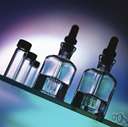aldol
Also found in: Thesaurus, Medical, Encyclopedia, Wikipedia.
Related to aldol: Haldol, aldol reaction, Claisen condensation, Aldol condensation, Enolate, Aldol addition
al·dol
(ăl′dôl′, -dōl′, -dŏl′)n.
1. A thick, colorless to pale yellow liquid, C4H8O2, obtained from acetaldehyde and used in perfumery and as a solvent.
2. An organic compound containing an alcohol and a carbonyl group, especially a beta-hydroxy aldehyde.
3. A chemical reaction that produces a beta-hydroxy carbonyl compound as an intermediate or final product.
[ald(ehyde) + -ol.]
American Heritage® Dictionary of the English Language, Fifth Edition. Copyright © 2016 by Houghton Mifflin Harcourt Publishing Company. Published by Houghton Mifflin Harcourt Publishing Company. All rights reserved.
aldol
(ˈældɒl)n
1. (Elements & Compounds) a colourless or yellowish oily liquid, miscible with water, used in the manufacture of rubber accelerators, as an organic solvent, in perfume, and as a hypnotic and sedative. Formula: CH3CHOHCH2CHO. Systematic name: 3-hydroxybutanal
2. (Elements & Compounds) any organic compound containing the functional group -CHOHCH2CHO
3. (Chemistry) (modifier) consisting of, containing, or concerned with the group -CHOHCH2CHO: aldol group or radical; aldol reaction.
[C19: from ald(ehyde) + -ol1]
Collins English Dictionary – Complete and Unabridged, 12th Edition 2014 © HarperCollins Publishers 1991, 1994, 1998, 2000, 2003, 2006, 2007, 2009, 2011, 2014
al•dol
(ˈæl dɔl, -dɒl)n.
a colorless, syrupy, water-soluble liquid, C4H8O2, used chiefly in the manufacture of rubber vulcanizers and accelerators, and in perfumery.
Random House Kernerman Webster's College Dictionary, © 2010 K Dictionaries Ltd. Copyright 2005, 1997, 1991 by Random House, Inc. All rights reserved.
ThesaurusAntonymsRelated WordsSynonymsLegend:
Switch to new thesaurus
| Noun | 1. |  aldol - an oily colorless liquid obtained by the condensation of two molecules of acetaldehyde; contains an alcohol group (-OH) and an aldehyde group (-CHO) aldol - an oily colorless liquid obtained by the condensation of two molecules of acetaldehyde; contains an alcohol group (-OH) and an aldehyde group (-CHO)acetaldol - unsaturated aldol organic compound - any compound of carbon and another element or a radical |
Based on WordNet 3.0, Farlex clipart collection. © 2003-2012 Princeton University, Farlex Inc.